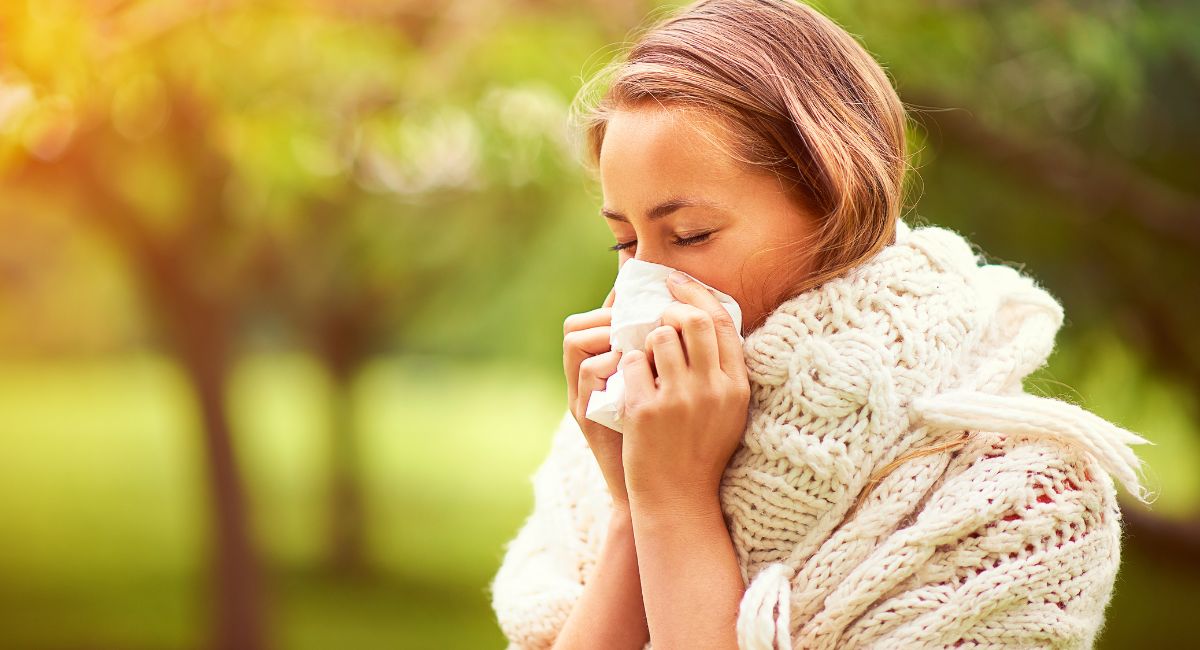It’s springtime in Boston, and there’s no shortage of amazing activities we can do outdoors. Unfortunately, this season isn’t a walk in the park for everyone. As the temperature warms and the flowers bloom, spring allergies cause a range of symptoms, from itchy eyes and a scratchy throat to sneezing and a runny nose.
Luckily, there are several ways to treat your spring allergies so you can walk along the Freedom Trail and enjoy outdoor dining without wheezing. Let’s explore some of the most common allergies in Boston and how you can manage them effectively.
Spring Allergens in Boston
Boston and our surrounding areas are home to numerous types of trees and grasses that can trigger your spring allergy symptoms, including:
| TREES | GRASS |
|---|---|
| Ash | Bermuda |
| Aspen | Fescue |
| Hickory | Orchard |
| Maple | Redtop |
| Mulberry | Ryegrass |
| Oak | Timothy |
| Walnut | |
| Willow |
All of these release pollen into the air and can leave you sneezing, wheezing, itchy, scratchy, and break out in hives. Their peaks vary based on the weather, but allergy season usually kicks off in March. Here’s what a typical allergy season looks like in Boston:
| MONTH | TREES | GRASS |
|---|---|---|
| February | Low pollination | Low pollination |
| March | Moderate-to-high pollination | Moderate pollination |
| April | High pollination | Moderate-to-high pollination |
| May | Moderate pollination | Moderate-to-high pollination |
| June | Low pollination | High pollination |
| July | Low pollination | Low-to-moderate pollination |
| August | Low pollination | Low pollination |
Boston is also home to several types of weeds that can cause your allergies to spike in autumn, including mugwort, ragweed, and wormwood.
Treating Your Spring Allergies
From limiting your exposure to taking medication, there are several ways to minimize the impact that allergies can have on your daily life. Luckily, they’re also pretty easy and cost-effective.
How to Limit Your Allergen Exposure
The most straightforward way to reduce your allergen exposure is to avoid pollen altogether. However, that requires staying indoors with all our windows shut for the entire season. Since that’s not a viable—or enjoyable—option, here are a few ways to minimize your exposure:
1. Check Out the Pollen Allergy Forecast
Pollen.com has a five-day pollen forecast that indicates which days pollen counts will be higher and when. If you have flexibility regarding the errands you must run throughout the week, aim to do them on days and times when the pollen count is low.
2. Mask Up
Masks were helpful long before the pandemic and can mitigate how much pollen gets into your airways. While no one wants to wear a mask outside on a beautiful sunny day, sinuses will thank you for it.
3. Go Outside Later
Pollen counts are typically lowest in the late afternoon and evening. If you want to catch some sun without hacking a lung, make outdoor plans at or before dinner time. Just don’t forget to wear sunscreen!
4. Shower Regularly
Once you’re done with your outdoor activities, throw your clothes straight into the washing machine and take a shower to rinse off any pollen that’s followed you home. Then, you should be able to breathe easily to continue your daily activities.
Keep Your Indoor Air Clean
Keep your home as dust-free as possible. Dust and vacuum regularly, and wash your clothes more often. Also, make it a habit to remove your shoes before entering your home so that you aren’t tracking pollen indoors. You should encourage your guests to do the same.
Also, invest in some high-efficiency particulate air filters, or HEPA. HEPA filters can remove at least 99.97% of pollen, mold, bacteria, dust, and other airborne particles. You can install HEPA filters in your A/C unit, HVAC system, and your vacuum to further prevent pollen circulation. If you have your A/C unit on, you can also keep your windows closed so that pollen can come
For extra credit, use a dehumidifier to keep your indoor air dry.
Allergy Medication
Even when you limit your exposure to pollen and keep your place clean, you can’t hide from your allergies forever—and you shouldn’t have to! If you want to walk or bike to work or eat lunch outdoors, you desire to do so without wheezing. For that, there’s no shortage of allergy medication, including:
- Decongestants
- Antihistamines
- Eye drops
- Nasal sprays
While there’s a plethora of medication out there, we recommend quercetin supplements.
How Quercetin Works
Quercetin is a flavonoid commonly found in fruits, vegetables, grains, tea, and wine. People take quercetin to boost their immune systems, combat inflammation, improve their exercise performance, and maintain good health in general. Studies also show that quercetin’s anti-inflammatory properties can relieve allergy symptoms.
Early research indicates that quercetin can block enzymes that spurn inflammation and suppress histamine, an inflammation-promoting chemical that causes allergy symptoms. In another study using mice, quercetin supplements can also mitigate peanut-related anaphylactic reactions.
While a lack of research makes it unclear whether or not humans will experience similar results, the benefits of quercetin are promising.
Getting Ready for Allergy Season with BDH
At Boston Direct Health, we want you to have everything you need for enhanced, optimal wellness. That includes everything from aesthetics to sexual health, cancer screenings, and even your spring allergies.
Allergy season may already be in full swing, but that doesn’t mean you have to stay indoors to remain healthy. Are you ready to enjoy the outdoors without breaking out in hives? Schedule an appointment with us today!







